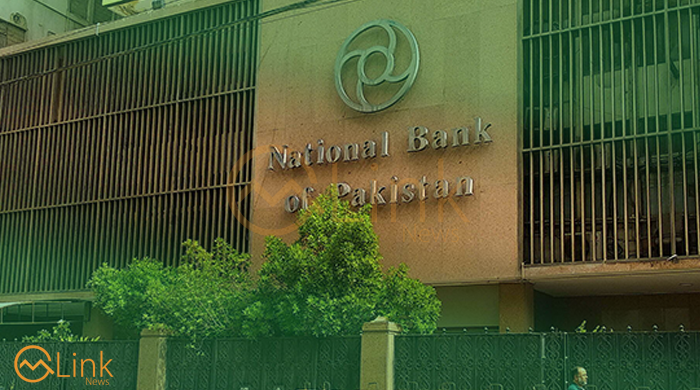August 16, 2021 (MLN): The increasing reliance of today’s lifestyle on the power sector has put it in the limelight as managing the demand and supply has become a most complex phenomenon to deal with for the relevant authorities.
The rising difference between the paying capacity or average income of the consumers and prices of energy always remains the talk of the town. The issue does not end here, as the whole sector is tied up with complexities on many fronts. i.e, from power generation to distribution, line losses and so on.
These multifaceted issues are surrounded by the opinion of “Privatization of DISCOs” for so long as if it is the only solution in the presence of inefficient technical deliveries from the concerned institutions. Meanwhile, on the surface, it seems the government is contributing its due share to address this multifaceted issue and in the continuation of this, various measures, policies and plans keep popping up every now and then.
To highlight the same, Ismail Iqbal Securities has recently conducted a webinar on the topic “Pakistan’s Energy Issues- The Way Forward.” The webinar brought together distinguished speakers including Mr. Waqas Bin Najeeb, Member (Energy), Ministry of Planning Development & Special Initiatives (MoPDSI), and Mr. Asad Ali Shah, Director K-Electric and Former Chairman Pakistan Refinery Limited (PRL). The session was moderated by Mr. Ahfaz Mustafa, Chief Executive Officer, Ismail Iqbal Securities.
The energy issues are kept soaring and also leaving their mark on the domestic equity market. The market capital is $50.5 billion, out of which $9-9.5bn (20%) is directly impacted by the energy issues. This is possibly one of the reasons why the market has always been lethargic, said Ahfaz Mustafa, CEO, Ismail Iqbal Securities.
In order to create a competitive environment within the power sector and improve its efficiency, policymakers set out few targets under the vision of “Power Sector by 2023” that need to be executed by the end of 2023, Waqas Bin Najeeb, Member (Energy), MoPDSI said during the webinar.
The vision includes load-shedding free Pakistan which means no forced load-shedding, lower power cost wherein the average cost of power will not increase more than inflation, zero flow of circular debt, and a competitive power market where all new IPPs will be merchant plants based on market risk.
The plan also designed the way forward that underlined that the “future is renewable”, all new IPPs will be based on low-cost renewables (solar, hydropower, wind, biomass).
“I think whoever has been involved in the power sector has been observing this for the past couple of decades that when the power sector deliberations used to happen, they were limited to generation oriented. Hence, there is a room for strategy development, which is a welcome space for the government and the institutions because challenges coming ahead are quite tough,” he said.
Expressing his views about moving to a competitive power market, he stressed the reorganization of the power sector. There is a need to strengthen the regulator and State-Owned Enterprises (SOEs) to bring a competitive market. In addition, the participation of the private sector will play a significant role to improvise the management and minimize the losses incurred.
“Moreover, the implementation of Competitive Trading Bilateral Contract Market (CTBCM) is the need of time and for this, the ministry is required to improve its technical capacity,” he said.
With regards to the implementation of the reform agenda, the Council of Common Interest (CII), approved the National Electricity Policy to improvise power generation and distribution.
On the policy side, he said, “I think that the Disco's privatization is a very complex issue privatization commission and power sector has gone through various experiments.” To recall, a few years back FESCOs privatization was the topic of discussion but it could not happen due to various reasons.
However, in days to come, the private sector inclusion would appear to manage DISCOs. It may not be outright privatization, but it will be a step forward toward optimizing efficiency, he added.
Currently, every matter regarding policymaking is moving around Indicative Generation Capacity Expansion Plan (IGCEP) 2021-30 by NEPRA which is prepared by NTDC. He also informed the house that decision-making regarding power generation and distribution is now being done on models. At present, Ministry has long-term dispatch models and pricing models, which were not there two to four years ago due to insufficient data.
Fast Track implementation of CTBCM along with the above-mentioned models will successfully gather market participants that would strengthen the Power Division.
Dealing with bureaucracy and its structure is another complexity on the road to empowering SOEs. However, the change is happening but the pace of change is quite slow as these changes take a long time in the presence of a multifaceted structure.
On the financial side, the circular debt management plan has been monitored closely and the Prime Minister takes periodic updates on the implementation of that plan.
Talking about National Transmission & Despatch Company (NTDC), he said that NTDC is up to implement more merit-oriented dispatch that brings the overall cost of power down. There is a very large transmission constraint removal investment plan, which would cater to load centers.
Despite having the generation capacity, the load has not been served efficiently and here the gap of 25,000 megawatts comes in, even if the load demand is high. To manage this, a two-year investment plan worth Rs100 billion is allocated under PSDP.
With respect to DISCOs, he added, “Management has been hired for many of the DISCOs already, all the DISCOs are preparing their investment plans on the back of their steep performance targets. It is more investment-oriented, which is a good thing to see. That's how utilities should work. So, I think what's what best can be done under public sector management is being attempted right now.”
Asad Ali Shah, Director K-Electric said that the idea of privatization seems great but the real issue is implementation. In the present circumstances, Ministry can never have the least cost-competitive power, without major privatization, especially DISCOs and GENCOs as they all need to be shifted to the private sector.
But it takes years for the government to appoint the board of directors of DISCOs but none of them has any stake so the concept of independent director does not work here.
Highlighting this, he said, governance is the major issue in Pakistan on the back of the uncontrolled spread of the government in all directions which is the major bottleneck in a way to keep things prioritize. Here, the privatization process demands a notable change as the portfolio of privatization cannot be allocated to any minister/politician. Privatization cannot happen under the present framework where there is no empowerment of even the privatization board.
While Waqas Bin Najeeb said that the RLNG based IPPs that Ministry commissioned a few years back, will be privatized. Hopefully, a couple of them were set up with 100% equity. He also added that some of the equity will likely be transacted in the market.
About K-Electric, he highlighted that supply to Karachi has already been increased. And it is planned to increase to 2000 megawatts very soon. The gas supply agreement was signed recently with Pakistan LNG Limited (PLL) for the provision of 150 MMCFD RLNG for the power utility's 900 MW RLNG-based power plant at Port Qasim. That will probably result in a lot of dynamics change between KE and the National Grid.
He further acclaimed that DISCOs performance is improving as steep and aggressive targets have been pursuing.
Regarding reduction in transmission and distribution (T&D) losses, he said that it needs significant investment, particularly from PSDP. Adding to it, he stated that since NEPRA has drastically reduced TND target which resulted in an even bigger gap between DISCOs real performance and NEPRA allowed performance. Here regulatory benchmarking needs to be discussed in the coming years as to how to bridge this gap.
Talking about the performance of K-Electric, Asad Ali shared insights regarding Aggregate Technical & Commercial losses (AT&C). In 2009, the overall average AT&C loss of DISCOs was 27.8%. And in 2020, it was 27.1%. So, in 10 years, the loss reduction is only pointed at 7%. It is very important to recognize that in 2009 AT&C losses were 43.2%, as per the NEPRA report. In 2020, these losses came down to 26% where KE has reduced AT&C losses by 17%. Accordingly, the estimate of cumulative saving of these losses due to the reduction reached Rs350 billion.
He further stated that by the end of next year, KE will be able to achieve NEPRA’s target but what happens if the DISCOs have not been able to reduce the losses and eventually, they don't get the tariff. As a result, in the absence of recovery, the losses are passed on, and they actually get converted into circular debt. The ultimate solution to all that is Swift Privatization of DISCOs, he said.
Taking this discussion ahead, Waqas Bin Najeeb underlined that the flow of circular debt accumulation in last years was Rs538 billion which is reduced to Rs130 billion, a whopping decline.
In order to improve the performance of DISCOs further, authorities have taken a number of measures, including subsidy rationalization under which, the current slabs are being redefined.
In addition, the government is putting a lot of effort to increase sales, because one of the ways to improve this sector would increase the sales demand. For this, currently, they are selling incremental demand on marginal cost for the grid. Migration from captive power generation to the national grid is also encouraged.
For this, concessional rates are being offered for industries and these packages will hopefully continue so that the industry can benefit and our power sector can also get help from that from increases. Moreover, Thar coal utilization will also help the power sector, he added.
He also indicated the project of Railway link between Islamkot and Chorr which is being planned (potential IPP Project). This project is almost worth $150 million that becomes viable as the volume of coal.
Talking about the petroleum sector, Ministry is up to maximize the utilization of LNG import infrastructure. Third-Party access rules have been approved for the pipelines. Meanwhile, there are two terminals in the pipeline that are going to get commissioned soon.
There are differences of opinion on how to go about the North-South Gas Pipeline. Pertaining to this long-standing pipeline project, policymakers realize that this decision needs to be made very quickly.
Gas storage infrastructure is another issue, the oil and gas sector is facing for which a feasibility study for gas storage has been prepared. We would be able to take advantage of the seasonal drive to store all molecules as much as possible. He also informed the house that a preliminary feasibility study has been done for Badeen, the two or three gas fields that have been identified where the gas can be re-injected, installed. This IPP project will help us establish a sustainable gas infrastructure in the country.
About petroleum refineries, he highlighted that the Refinery Policy is on the table waiting for approval. The policy will allow the sector to move towards Euro-V and deep conversions of refineries.
While answering a question pertaining to a weighted average cost of gas, he said local gas obviously is significantly cheaper than the LNG. However, these days, local gas is also available at relatively high rates which after weighted average costs the same. So, the issue is that, under the Constitution article, the province where the gas is generated, they have the first, right to that gas, although it's not being effectively implemented that is the provision of the Constitution.
In continuation, he further added that most of the gas 65% – 70% gas is produced in Sindh and Sindh industrialists are enjoying location advantage so how would the Sindh government agree to implement weighted average cost. He also mentioned, “Our current marginal cost is around Rs13 per unit a kilowatt-hour, which is sold nearly Rs15. So currently, the differential would be around Rs2.5. So, but because of the losses and recovery, there's a differential of almost Rs1-Rs2.
While answering a question pertaining to LNG, Waqas bin Najeeb added that currently, the LNG is treated as a petroleum product, not as a gas product, which means it is separately under the rules. This means it comes in the mix, and it's its cost is treated as a cost of a wellhead. If that became the principal, I think it will be the cost will be passed on to the consumers.
Responding to a query about CTBCM work in Karachi, he underlined that CTBCM is being implemented at the retail level, so we gain stages of market implementation. The first stage is wholesale market development, which means that the DISCOs will be more disciplined in trying to purchase their power rather than simple allocation from a centralized system. So, this wholesale bidding will work then all the bulk of our purchases, which are over 2000 in Pakistan. They are larger industries that take power, they become potential buyers of power.
In the second stage, there will be multiple sellers who can set up pipelines and sell to one of these buyers through a market. CTBCM will provide an effective banking mechanism between these Different buyers and sellers and then the retail stage competition.
There are various technical checklist or technical milestones that will have to be completed which includes smart metering, monitoring and accounting of the electrons at the retail level so that a healthy competition may build at the retail level.
“I think in the next four or five years, we will get to multi-buyer multi-seller market for bulk buyer customers and retail level competition,” he said.
Responding to a query, he stated that the construction time of the North-South Pipeline is 18 to 24 months and accordingly, the pipeline will be operational by the end of 2023 and the third LNG Terminal will be operational before winter, next year.
While giving the final remarks, Mr. Asad underscored the effective utilization of Thar Coal as it is the cheapest source of power worldwide. He said, “Unfortunately, we have done very little effort in utilizing its potential that will be the cheapest, in the long-term basis. The same will be cheaper than LNG, and the imported coal. Utilization of Thar coal will allow us to decline the cost.”
In addition, improvising the quality of regulation is the need of time and for this, we need to bring in smart regulation, he added.
Copyright Mettis Link News
42792







